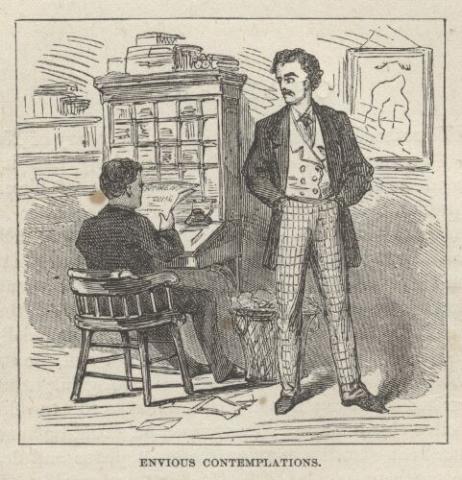Samuel L. Clemens and Richard Burton both took a steamboat from St. Louis to St. Joseph and neither had much to say about the trip. Burton does address the physical characteristics of the Mississippi River drainage basin and presents arguments as to why the Missouri River should not be considered as the Mississippi's headwaters.
July 18, 1861 Thursday - Orion and Sam left St. Louis on the Sioux City for St. Joseph, Missouri: "We were six days going from St. Louis to “St. Jo.”—a trip that was so dull, and sleepy, and eventless that it has left no more impression on my memory than if its duration had been six minutes instead of that many days. No record is left in my mind, now, concerning it, but a confused jumble of savage-looking snags, which we deliberately walked over with one wheel or the other; and of reefs which we butted and butted, and then retired from and climbed over in some softer place; and of sand-bars which we roosted on occasionally, and rested, and then got out our crutches and sparred over. In fact, the boat might almost as well have gone to St. Jo. by land, for she was walking most of the time, anyhow—climbing over reefs and clambering over snags patiently and laboriously all day long. The captain said she was a “bully” boat, and all she wanted was more “shear” and a bigger wheel. I thought she wanted a pair of stilts, but I had the deep sagacity not to say so."
See Burton, Adieu to St, Jo: (The City of the Saints)
Unlike Burton and the Clemens brothers, Horace Greeley traveled down the Missouri River to Atchison, Kansas on a riverboat. From Atchison, Kansas May 15, 1859:
